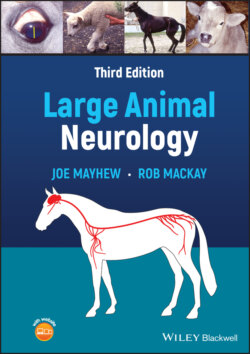Читать книгу Large Animal Neurology - Joe Mayhew - Страница 80
Astrocytes
ОглавлениеAstrocytes that are present in the gray and white matter are a major component of the cytoskeleton framework of the CNS. Their processes, with basal laminae, form part of the blood–brain and blood–CSF barriers, and they appear to act as a guide to migrating neurons during development. They tend to be relatively resistant to noxious stimuli and are associated with reparative processes. The common response to CNS damage is astrocyte hyperplasia and hypertrophy with prominence of their processes—fibrillary astrogliosis. For poorly understood reasons, the repair of larger areas of damaged CNS parenchyma often does not occur, leaving a void that is occupied by CSF‐like fluid surrounded by a lamina of astrocyte processes. Shrinkage and necrosis of astrocytes occurs with the death of other CNS elements during infarction, hemorrhage, and pressure. Astrocytes imbibe tissue fluid after it has leaked into extracellular spaces, and this is an early finding in various edematous states such as trauma, infarction, and vascular disorders. Astrocytes do act as phagocytes but to a lesser degree than resident microglia and invading macrophages. Reactive astrocytes are often found at the periphery of subacute and chronic lesions, surrounding any remaining holes left from larger loss of brain tissue (Figure 4.3). They often show prominent nuclear enlargement and eosinophilic cytoplasmic swelling and are then called gemistocytes.
